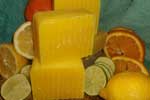Surveying the United States of America – History of the American Land Surveyor on the Great Plains of Nebraska – Surveying the Sandhills in 1904 – Art Prints of Oil Painting by Mel Gerhold
A limited edition of 1000 new, full-color commercial lithograph prints on heavy archival paper. Each print is numbered and signed by the artist. Stored in cool, dark, smoke-free environment.
In 1984 Rollin C. Curd of Chadron, Nebraska, commissioned an original oil painting by Mel Gerhold, who lived at that time on a small ranch near Crawford, Nebraska. Mr. Curd, a surveyor with the Bureau of Reclamation, Soil Conservation Service, and U.S. Forest Service for 34 years, was in private practice in Chadron and was also the Dawes County surveyor. He had looked for some time for paintings and drawings of the American surveyor in the West with little success.
Mel Gerhold, who has become well known for his works in private and public collections in the U.S. and abroad, had called to arrange for a land boundary survey. In the course of their discussion Mr. Curd learned that he was a painter of Western subjects. They agreed to an exchange – the survey for a painting of a surveyor at work in Nebraska based on a photograph from Rollin Curd’s collection. In 1984 and 1985 the survey and painting were completed.
The painting offers a typical view of a surveyor at work following the opening of the Sandhills to homesteaders by the Kinkaid Act of 1904. The surveyor is operating a compass and waving his hat to give line for chainmen. The scene is taken from a photograph of a survey crew measuring forest boundaries in the Nebraska Sandhills in 1902. They were preparing for the manual planting of a national forest near Halsey, Nebraska. The surveyor depicted in the painting is Louis C. Miller from Stillwater, Oklahoma.
A synopsis of the story behind the painting is enclosed with each print:
“On July 1, 1901, seven Forestry students met in Kearney, NE, to begin a reconnaissance survey of the Sandhills and Western Nebraska to determine the feasibility of planting trees in the Sandhills. They purchased a covered wagon, grub box, mules, saddle horses, camping equipment and food; then traveled westerly up the Platte and North Platte River Valleys, observing the location and size of Pine and Cedar trees. . . .”
The painting is rare for several reasons. Mr. Gerhold paints for himself and accepts commissions. He almost never paints from a photograph. As Mr. Curd had learned, paintings of land surveyors at work were rare to non-existent. He writes about the early Nebraska surveyor in the dedication of his book, p. iv,
A History of the Boundaries of Nebraska and Indian-Surveyor Stories, The Boundaries Publishing Company, Chadron, Nebraska, 1999:
Their notes and plats are filed in the courthouses of 93 counties. Little has been written of their personal trials and hardships.
Many of these men were Civil War veterans. Some were schooled from Eastern colleges, some from West Point, some from the military Corps of Engineers, some from on-the-job training. Their surveys marked on the ground the Rectangular System that provided monuments for homesteaders to build their fences and receive a deed of ownership from the United States Government. For the immigrants, who had little opportunity to own land in their native countries, the American dream could be fulfilled.
The early surveyors wore rough cotton clothing and boots. Frequent rain, hail, and snowstorms drove them to dig holes in the sand or cower under big trees, but not many trees were available. The cook wagon and tents were the only shelter in most camps. The compassman, chainmen, and moundsmen were often caught by storms during the dawn to dusk workday, miles from camp. They had to carry water in a canteen but could not carry enough on a hot day. Springs and streams were scarce in Western Nebraska. Chewing on grass to bring up saliva could help when canteen was dry. The Indians and fur traders could travel the river valleys, but the surveyors had to measure each square mile of our State up and down hills. Their footsteps, like ghosts of the past crossing the prairies, preceded the fence builders.
Surveyors did not carry first-aid kits in those days. The prairie rattler would strike if startled. The men had to carry rifles and ammunition in Indian country. With a canteen, chain, pins, stakes, shovels, and compass, the survey crew walked in excess of 20 miles per day. Their meals were monotonous, with biscuits, bacon, beans, and coffee. In September, they could find wild plums, chokecherries, and sand cherries.
Families did not accompany the survey crew. They were separated from April to November with no telephones or mail service.
The prints are 16″ x 20″ and ship in a heavy flat cardboard mailer or tube. They are $41.00 + shipping. Please contact us if ordering more than one print. Order weights must be combined manually to provide a lower shipping rate. FOR DETAILS AND TO ORDER, CLICK HERE.
To learn about the extraordinary place called the Sandhills of Nebraska, visit Sandhills Journey





 Jeanne Robertson
Jeanne Robertson Every Good Gift Montana
Every Good Gift Montana